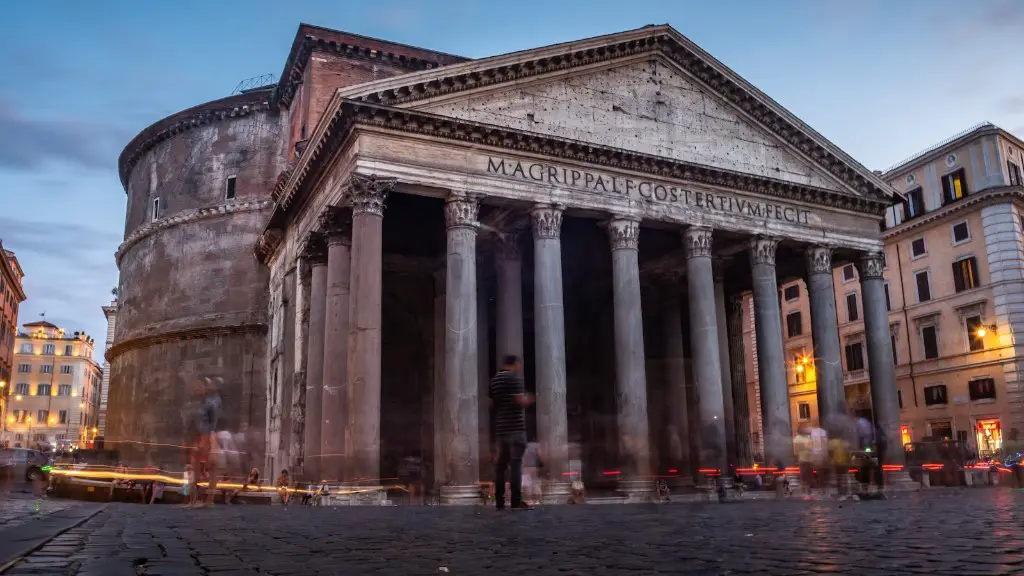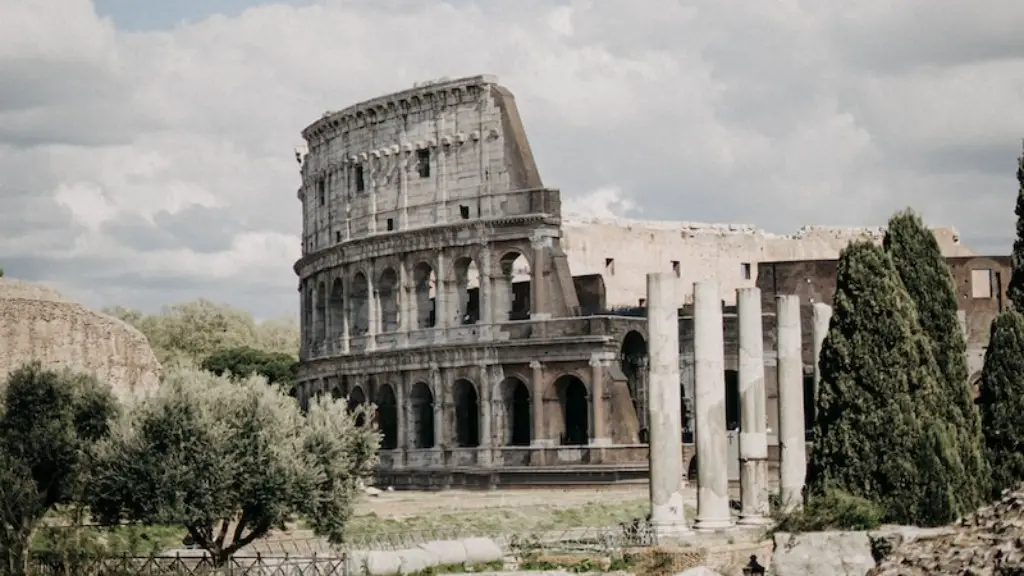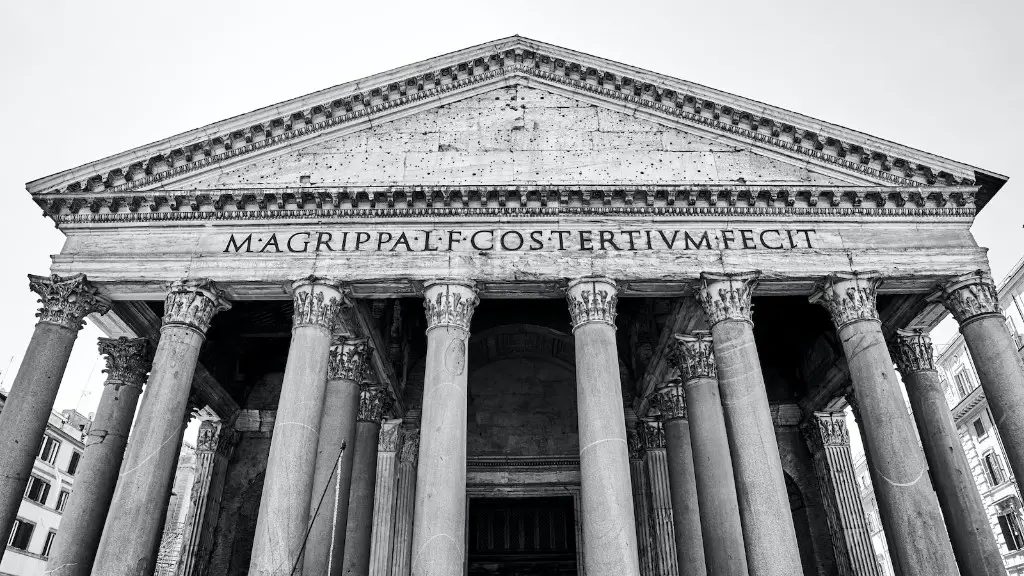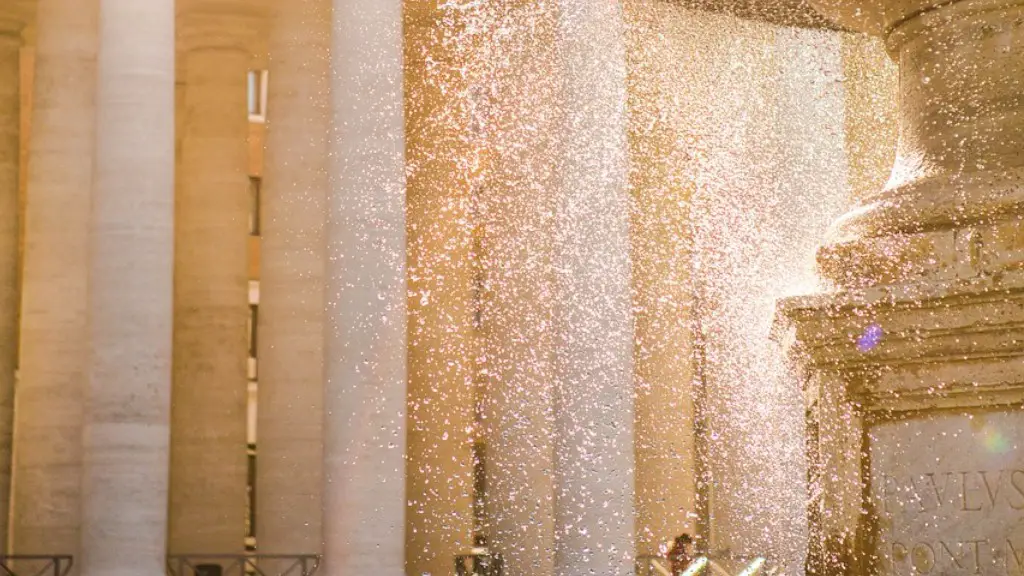As the United States was formed in 1776, the Founding Fathers of the new nation looked to many sources for inspiration in forming a new government and society. One period of history they turned to was Ancient Rome, the great civilization that had existed in Italy between approximately 753 BC and 476 AD and influenced the world with its political system, advances in technology, and art. The influence of Ancient Rome on the Founding Fathers was far-reaching, and it is easy to understand why they held the Roman Republic in such high esteem.
Firstly, the Founding Fathers saw the Roman Republic as a great example of how a government should be structured. The idea of a group of elected officials — a senate — advising the executive branch of government, namely the Roman Consul, was seen as a powerful and effective way of ensuring political stability. This served as an invaluable point of reference for the Founding Fathers as they sought to divine a suitable system of government that could ensure the balance of power, something the Roman Republic had perfected.
Secondly, the Founding Fathers looked towards Roman society and its values when crafting the constitution of the newly formed United States. The emphasis that Ancient Rome had placed on the individual, offering freedom of speech, thoughts and actions was a crucial factor in the Founding Fathers’ decision to give US citizens the right to bear arms as a form of defense.
Another factor why the Founding Fathers found Ancient Rome so inspirational was their advancement in technology and engineering. The Romans had developed many impressive feats of engineering such as aqueducts, roads and bridges, while their use of concrete had revolutionized architecture. The Founding Father’s of the new country looked to the progress that Ancient Rome had made in these areas and used them as examples of what could be achieved.
Finally, Ancient Rome had developed its own culture, which included music, art, literature and theatre. The Founding Fathers looked to the great works of art and literature of the time, such as Virgil’s Aeneid, as an example of beauty, culture, and civilization. They also looked towards Rome’s strong tradition of theater and performance, which they felt gave an invaluable insight into the Roman way of life.
Political Structure
The political structure of the United States was heavily influenced by the government of Ancient Rome. The concept of the Roman Senate and Consul served as the primary guiding principle behind the formation of the U.S. Senate and its presiding officer, the president. The Founding Fathers saw how Ancient Rome had developed a constitutional set-up wherein power was distributed and centralized, fostering both freedom and stability in the same stroke, and sought to replicate this with the formation of the three main branches of the U.S. government: legislative, executive, and judicial.
In addition to this, rom the example of Rome, the Founding Fathers learned that in order to protect citizens’ freedoms and liberties, the government must have a set of laws and regulations on which it can be held accountable. This led to the formation of the US Constitution, which lays out the limits of federal authority and serves as the foundation of American government. This was also heavily influenced by the Roman model, which demands that the government adhere to established codes of law and respect the authority of citizens.
Civil Rights
The civil rights of citizens were a major factor in the Founding Fathers’ decision to model the citizens’ rights of the United States on those of Ancient Rome. The Romans believed that every individual was entitled to basic human rights and that these rights should not be taken away by any government. This was the basis of the Founding Fathers’ concept of civil rights, which include freedom of speech and the press, freedom of religion, the right to bear arms and the right of citizens to use government services. In addition to these civil rights, the freedom of movement and the right to private property were also heavily influenced by the Roman model.
The Founding Fathers saw how in Rome, civil rights allowed citizens to express themselves freely and to engage in meaningful political and public discourse without fear of retribution or discrimination. This, they felt, was something that should be part of the foundation of their nation and, thus, made sure that the citizens’ rights enshrined in the Constitution would also follow this Roman model of freedom and self-determination.
Cultural Impact
The influence of Ancient Rome can also be seen in the culture of the United States, especially when it comes to language, music, art, and literature. The Founding Fathers greatly admired the works of Virgil, Ovid, Catullus, and other Roman authors, which in turn inspired them to give birth to America’s own literature. Music was also heavily influenced by the works of Ancient Rome, from the lyrics of schoolchildren reciting the works of Horace to the melodies of classical composers.
Additionally, the art of Ancient Rome had a major impact on American art and design, with the sculpture of Augustus being particularly influential, inspiring works such as the Washington Monument and the Statue of Liberty. The Founding Fathers were so impressed with the architecture of Ancient Rome that they looked to it when crafting the architecture of the new nation, using the ideas of grandeur and the use of concrete and arches.
Legal System
When it came to the law, the Ancient Romans had developed a complex legal structure that served as a useful reference for the Founding Fathers. The Roman legal system put in place a system of checks and balances that made sure that justice was served and that rights and laws were respected. This system became the basis for the legal system of the United States, and the Founding Fathers took many aspects of it and adapted them to fit their vision for the new nation.
One of the most significant aspects of Roman law was the concept of natural law, which stipulated that all individuals had the right to life, liberty, and property. This had an immense influence on the Founding Fathers, and this concept can be seen in the Fifth Amendment of the Constitution, which guards against the seizure of private property for public use without fair compensation.
The Founding Fathers also looked to the Romans’ detailed civil law codes when setting up the American legal system. This included rules that regulated relationships such as marriage and brother-sister relationships, as well as aspects such as inheritance and property. Furthermore, the Romans codified criminal law, setting out punishments for different crimes and providing guidance on the application of the death penalty
Political Thought
Finally, the political thought of Ancient Rome was a major influence on the Founding Fathers. The Roman Republics’ emphasis on the importance of liberty and personal autonomy led the Founding Fathers to develop their own political philosophy, one that synthesized the ancient lessons of Rome with the new reality of a modern, democratic society.
The Founding Fathers looked to the political writings of Cicero, which argued that citizens should be able to make their own decisions and that the power of the executive branch should be limited. This idea served as the foundation of the US Constitution, whereby a system of checks and balances would be in place to ensure that no one branch of the government had too much power.
The Founding Fathers learned many lessons from the government of Ancient Rome, but they also looked to Roman society and culture to inspire their aspirations for the United States. It is easy to see the influence of Ancient Rome in the political structure, civil rights, culture, legal system and political thought of the United States, making it easy to understand why the Founding Fathers held the Republic in such high esteem.




